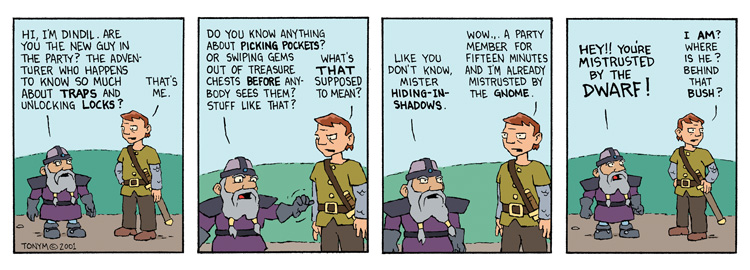I guess you really must hate Paizo and 3.5 era Dragon magazine then.
Sir, you misunderstand.
I do not object to anyone poking fun at gnomes. Gnomes are capable of taking a joke, being tricksters themselves. The things you posted were all in good fun. (And I must say I didn't at all care for the 3.5 bard favored class myself. Give me the illusionist all the way!)
Context is everything.
The context for the animated short you refer to was WotC deciding the gnome race didn't see enough use to be included in the PHB as a playable race. Given that two of my favorite, longest-played characters are gnomes, and not easily translatable into anything else, this was distressing. Mearls himself has admitted in an L&L that they gave a large number of gaming groups cause to tune them out with that decision.
That was bad enough. What was worse was the dismissive way WotC kept handling this decision, like it was just no big deal and we all ought to get over it. There was a bit of a vibe of, "We really don't care how you feel, there aren't enough of you to matter. Shove off."
In this context, they released a video of a gnome and a tiefling. Now, without the context, some of the things the gnome says could be taken as a bit funny - though I've never known D&D gnomes to be as blindingly stupid as the one in the video, I could stretch the point for the sake of humor. But I'm seeing two of my beloved characters in that short, being mocked and then vaporized by the oh-so-cool tiefling.
Is it so strange that I would take this as insult on top of injury? It came across as just incredibly insensitive and hamhanded.
Even if you do find it strange, I really don't have to justify my feelings to you. They are what they are.
I repeat, I've got no problem with a D&D webcomic or Dragon cartoon poking fun at gnomes - there's plenty of stuff in D&D worth ribbing now and then, and anyone taking the time to make such a thing is probably a D&D fan anyway, and thus joking from the standpoint of a fan.
I did not see the video in question is coming from the standpoint of a fan poking fun. It came across as hostile and dismissive, instead.




